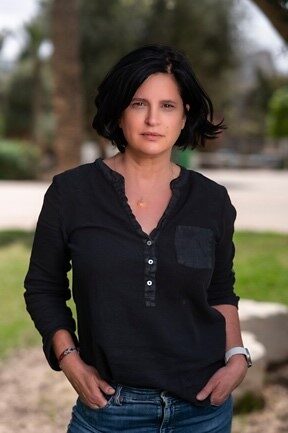[Seminar - Cancelled] "Benthic foraminifera as bioindicators of coastal marine environments" by Prof. Sigal Abramovich

Date
Location
Description
Speaker: Prof. Sigal Abramovich, Chair, Department of Earth and Environmental Sciences, Ben Gurion University of the Negev [Link]
Abstract:
Foraminifera are single cell single cell eukaryotes, that are highly diverse and abundant in all parts of the oceans. They are among the most ancient and abundant fossils and their shells made up of the mineral calcite, are accumulated in mass quantities in oceanic sediments and thus become one of the most important components marine archive. Our research primarily focuses on shallow-water tropical benthic species that are emerging as vital for biomonitoring climate change and anthropogenic pollution. In my presentation, I will provide an overview of the three ongoing research projects we are currently engaged in:
- Marine Biomonitoring of Heavy Metals: As the awareness of anthropogenic stressors on marine ecosystems grows, sustainable coastal industries demand improved monitoring of heavy metal (HM) pollutants, even at low concentrations and during pulse-release events. Foraminifera build their calcite shells by sequentially incorporating impurities reflecting the composition of the growth medium. Therefore, the chemical composition of each chamber mirrors the heavy metal content in the ambient water during calcification. In our research, we employ advanced Laser Ablation ICP-MS and ICP-MS technologies to analyze specific parts of foraminiferal shells, allowing us to detect short-term events of heavy metal pollution in coastal environments.
- Lessepsian Invasion: The Eastern Mediterranean has witnessed a significant invasion of alien tropical species via the Suez Canal, known as the Lessepsian invasion. This phenomenon is fueled by increasing sea surface temperatures and the establishment of hyper-oligotrophic conditions due to the High Aswan Dam's closure on the Nile River. Our access to both the Red Sea and the Eastern Mediterranean provides a unique opportunity to study the scale and impact of the Lessepsian invasion on coastal marine ecosystems. We concentrate on several species of larger benthic foraminifera (LBF) indicative of tropical and subtropical regions, combining ecological fieldwork with molecular phylogeny and laboratory culturing experiments.
- Symbiont bearing foraminifera as a model for thermal Stress: Certain calcifiers, such as corals and foraminifera, have evolved into obligate symbiotic relationships with various marine algae, forming an intricate evolutionary entity known as a holobiont. Numerous studies have demonstrated that these host-symbionts relationship (holobionts) are highly sensitive to the ongoing climate changes expressed, in these habitats, by elevated sea surface temperature and acidity. While corals and their algal partners have received considerable attention, symbiont-carrying benthic foraminifera have been somewhat neglected. Nonetheless, these foraminiferal holobionts are emerging as vital for monitoring tropical littoral environments. Understanding host-symbiont interactions is crucial for assessing the effects of global change and developing necessary regulatory measures.
• Selected recent publications
- Ben-Eliahu N., Herut B., Rahav, E. and Abramovich S. (2020) Shell Growth of Large Benthic Foraminifera under Heavy Metals Pollution: Implications for Geochemical Monitoring of Coastal Environments. International Journal of Environmental Research and Public Health, 17(10), 3741.
- Pinko, D., Abramovich, S. and Titelboim D. (2020) Foraminiferal holobiont thermal tolerance under climate change: Roommates problems or successful collaboration? Biogeosciences, 17, 2341–2348.
- Manda S., Titelboim, D., Ashckenazi-Polivoda, S, Almogi-Labin, A., Herut, B. and Abramovich, S. (2020) Epiphytic benthic foraminiferal preferences for macroalgal habitats: implications for near future coastal warming. Marine Environmental Research, 161: 105084.
- Titelboim, D., Sadekov, A., Blumenfeld, M., Almogi-Labin, A., Herut, B Halicz, L., Benaltabet,T., Torfstein, A, Kucera, M., Abramovich, S. (2020) Monitoring of heavy metals in seawater using single chamber foraminiferal sclerochronology. Ecological Indicators. https://doi.org/10.1016/j.ecolind.2020.106931
- Titelboim, D, Thangarjan, S., Manda, S., Morard, R., Ashckenazi-Polivoda S., Adler, M., Almogi-Labin, Herut, B. Kucera, M., Gold, D.A. Abdu, U. Abramovich, S., (2021), The transcriptomic signature of heat and cold stress in symbiont bearing benthic foraminifera Amphistegina: implications for range expansions. Functional Ecology. https://doi.org/10.1111/1365-2435.13929
- Chen Kenigsberg, Titelboim, D., Ashckenazi-Polivoda, S., Herut, B., Kucera, M., Zukerman Y., Hyams-Kaphzan, O., Almogi-Labin, A., and Abramovich, S., (2021). The combined effects of rising temperature and salinity may halt the future proliferation of symbiont-bearing foraminifera as ecosystem engineers. Science of the Total Environment. https://doi.org/10.1016/j.scitotenv.2021.150581
- Hoober, L; Titelboim, D., Abramovich, S, Herut, B., Teutsch, N Benaltabet, T., Torfstein, A., (2022) Establishing Baseline Assessment Levels for Monitoring Coastal Heavy Metals Using Foraminiferal Shells: A Case Study from the Southeastern Mediterranean. Water., 14, 1532. https://doi.org/10.3390/w14101532.
- Pinko, D., Abramovich, S., Rahav, E., Belkin, N., Rubin-Blum, M., Kucera, M., Morard, R., Holzman, M., Abdu, U., Shared ancestry of algal symbiosis and chloroplast sequestration in foraminifera (in press 2023). Science Advances.
Subscribe to the OIST Calendar: Right-click to download, then open in your calendar application.



